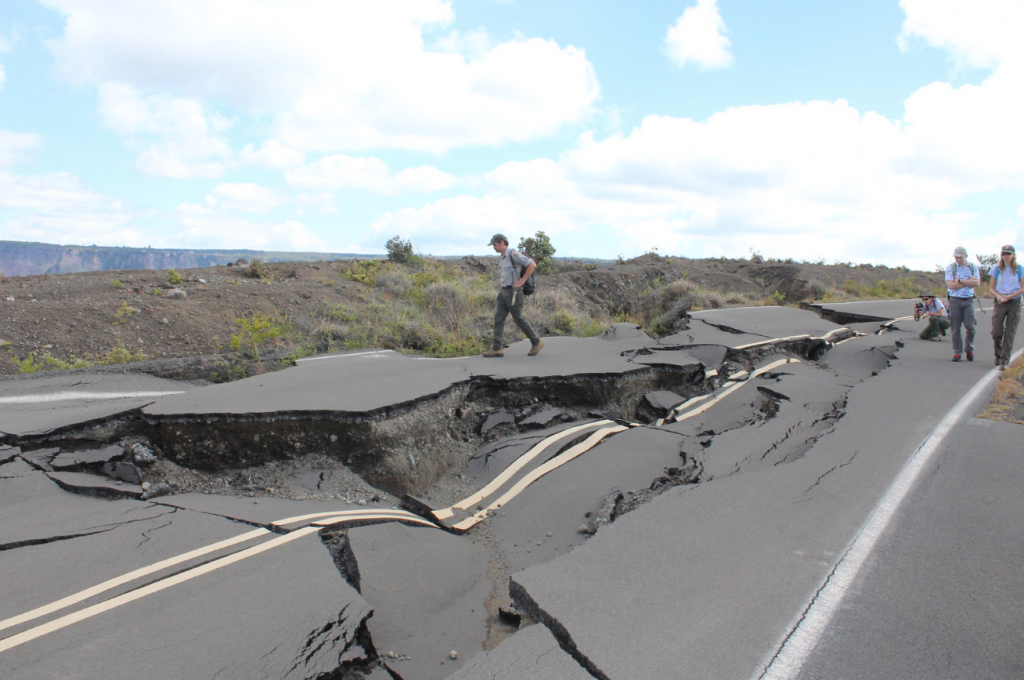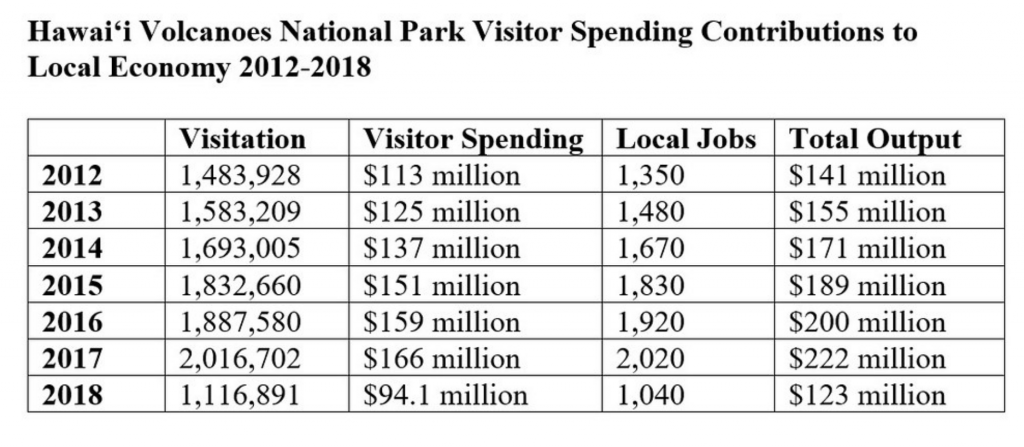Hawai‘i Volcanoes National Park Visitors Create $94.1M for Big Island

Crater Rim Drive, March 29, 2019. PC: Jessica Ferracane
A new US National Park Service report shows that 1.1 million visitors to Hawai‘i Volcanoes National Park in 2018 spent $94.1 million in communities near the park.
That spending supported 1,040 jobs in the local area, and had a cumulative benefit to the local economy of $123 million.
“It’s not surprising to see a decrease in visitor spending during 2018 since most of Hawai‘i Volcanoes National Park was closed for 134 days due to unsafe and unpredictable volcanic activity,” said Acting Superintendent Rhonda Loh. “What’s important to note is that dangerous eruptive activity has ceased, and the vast majority of the park is open. Visitors are enjoying the park under clear skies free of volcanic gas, and are out hiking trails and marveling at scenic vistas near the summit, on Chain of Craters Road and Mauna Loa.”

Hawai‘i Volcanoes National Park Visitor Spending Contributions to Local Economy, 2012-18.
Loh also added that the park’s Kahuku Unit, located about an hour south of the park’s main entrance, remained open during the volcanic incident and increased its operational hours. As a result, Kahuku visitation increased 181% in 2018 (25,535 visitors) from the prior year (9,097 visitors in 2017).
The park’s continued eruption recovery progress is updated here.
The 2017 NPS economic report showed that 2,016,702 visitors to the park in 2017 spent $166 million in communities near the park. That spending supported 2020 jobs in the local area and had a cumulative benefit to the local economy of $222,394,900.
The peer-reviewed visitor spending analysis was conducted by economists Catherine Cullinane Thomas and Egan Cornachione of the U.S. Geological Survey and Lynne Koontz of the National Park Service. The report shows $20.2 billion of direct spending by more than 318 million park visitors in communities within 60 miles of a national park. This spending supported 329,000 jobs nationally; 268,000 of those jobs are found in these gateway communities. The cumulative benefit to the US economy was $40.1 billion.
Lodging expenses account for the largest share of visitor spending, about $6.8 billion in 2018. Food expenses are the second largest spending area and visitors spent $4 billion in restaurants and bars and another $1.4 billion at grocery and convenience stores.
Visitor spending on lodging supported more than 58,000 jobs and more than 61,000 jobs in restaurants. Visitor spending in the recreation industries supported more than 28,000 jobs and spending in retail supported more than 20,000 jobs.
Report authors also produce an interactive tool that enables users to explore visitor spending, jobs, labor income, value added, and output effects by sector for national, state, and local economies. Users can also view year-by-year trend data.
The interactive tool and report are available at the NPS Social Science Program webpage.
To learn more about national parks in Hawai‘i and how the National Park Service works with Hawai‘i communities to help preserve local history, conserve the environment, and provide outdoor recreation, go online.














